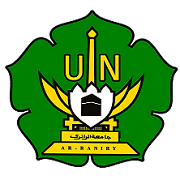AKURASI WAKTU JAM MASJID DI KOTA LHOKSEUMAWE
Abstract
Accuracy of time is very closely related to Islamic law, a lot of worship related to time, such as prayer times, breaking fast and ruling. Without a standard time accuracy, worship can not be done perfectly. The clock is a marker of time that makes it easy for Muslims to carry out worship and social activities. Until now there has been no clock that can survive accuracy with a long time, meaning that all clocks must be calibrated within a certain time span. The time standard for clock calibration is the Atomic Clock time that is on the GPS or on the link http://ntp.bmkg.go.id/Jam.BMKG controlled by Badan Meteorologi Klimatologi dan Geofisika (BMKG). This study tries to find the accuracy of mosque hours and the type of clock used in mosques in Lhokseumawe City by using the method of observation and documentation of 20 mosques selected as samples in the study. The results of observation and documentation show that all mosques (100%) in Kota Lhokseumawe have used the clock as a timemarker, 12 mosques, or 60% of the mosque has been using a digital clock with accuracy of 50% in accordance with the standard and 35% analog clock in accordance with a clock standard observer BMKG.
Keywords: Time System, Global Positioning System (GPS), Mosque and Lhokseumawe.
Full Text:
PDFReferences
Abd. Salam. Ilmu Falak Praktis (Waktu Salat, Arah Kiblat, dan Kalender Hijriah). Surabaya: Sunan Ampel Surabaya, t.t.
Badan Hisab dan Rukyat, Departemen Agama. Almanak Hisab Rukyat. Jakarta: Proyek Pembinaan Badan Peradilan Agama Islam, 1981.
Bimas Islam RI. “Website Bimas Islam (Direktorat Jenderal Bimbingan Masyarakat Islam Kementerian Agama),” Desember 2019. https://bimasislam.kemenag.go.id/ infomasjid/masjid.
BMKG. “Server Jam BMKG (BMKG NTP Server),” Desember 2019. http://ntp.bmkg.go.id/Jam.BMKG.
Budiman, Djul Fikry, Sjamsjiar Rahman, dan Muhammad Irwan. “Pemanfaatan Running Text Sebagai Alat Bantu Informasi Waktu Sholat di Masjid Baiturrahman Desa Mujur Lombok Tengah.” Prosiding PKM-CSR 1 (1 November 2018): 163–69.
Darma, Dewa Ketut Bayu Semara, Bambang Bagus, dan Setiyo Setiyo. “Rancangan Penunjuk Waktu Atom Menggunakan GPS (Global Positioning System) dan NTP (Network Time Protocol) Sebagai Analisa Perbandingan Keakuratan Waktu.” APPROACH: Jurnal Teknologi Penerbangan 2, no. 1 (18 April 2018): 34–37.
Ismail. “Metode Penentuan Awal Waktu Shalat dalam Perspektif Ilmu Falak.” Jurnal Ilmiah Islam Futura 14, no. 2 (1 Februari 2015): 218–31. https://doi.org/10.22373/jiif.v14i2.330.
Ismail. “Standar Operasional Prosedur (SOP) Kalibrasi Arah Kiblat Masjid di Era Digital.” Al-Marshad: Jurnal Astronomi Islam dan Ilmu-Ilmu Berkaitan 5, No. 1 (2 Juni 2019). https://doi.org/10.30596/jam.v5i1.3126.
Jannah, Elly Uzlifatul, dan Elva Imeldatur Rohmah. “Sundial dalam Sejarah dan Konsep Aplikasinya.” Al-Marshad: Jurnal Astronomi Islam dan Ilmu-Ilmu Berkaitan 5, no. 2 (2 Desember 2019). https://doi.org/10.30596/jam.v5i2.3486.
Khafid. “GPS for ICS-2003, Introduction to the Global Positioning System.” Power Point dipresentasikan pada Kuliah, UIN Walisongo Semarang, Nevember 2019.
Khusurur, Misbah. “Mengenal Sistem Waktu Untuk Kepentingan Ibadah.” Al-Munqidz : Jurnal Kajian Keislaman 2, no. 2 (2013): 31–40.
Kota Lhokseumawe. “Sejarah Kota Lhokseumawe,” Desember 2019. https://www.lhokseumawekota.go.id/profile.php?id=1.
Muh. Ma’rufin Sudibyo. Sang Nabi Pun Berputar, Arah kiblat dan Tata Cara Pengukurannya. Solo: Tinta Medina, 2011.
Muhyiddin Khazin. Ilmu Falak dalam Teori dan Praktik, Perhitungan Arah Kiblat, Waktu Salat, Awal Bulan dan Gerhana. Yogyakarta: Buana Pustaka, 2004.
Najib, Muhammad. “Uji Akurasi Jam Waktu Salat (Studi Kasus Pelaksanaan Kalibrasi Jam Waktu Salat Masjid Agung Baitunnur Pati dan Masjid Jami’ Kajen).” Undergraduate, UIN Walisongo, 2016. http://eprints.walisongo.ac.id/6726/.
Oliver Montenbruck. “Practical Ephemeris Calculations,” 1989. https://kupdf.net/download/practical-ephemeris-calculations-oliver-montenbruck_ 59090a68dc0d60da37959e9a_pdf.
Peter Duffett-Smith. Practical Astronomy With Your Calculator. Peter Duffett-Smith. Cambridge University Press, 1995.
Presiden Republik Indonesia. Undang-undang Republik Indonesia Nomor 31 Tahun 2009 Tentang Meteorologi, Klimatologi, dan Geofisika (2009).
Raharjo, Sabto. “Otomatisasi Jam Sekolah Berbasis Mikrokontroler dan Dipogram Melalui Komputer.” Diploma, Univerversitas Muhammadiyah Surakarta, 2010. http://eprints.ums.ac.id/8969/.
Rinto Anugraha. Mekanika Benda Langit. Yogyakarta: MIPA UGM, 2012.
Sanjaya, W. S. Mada, Dyah Anggraeni, F Nurrahman, W Kresnadjaja, I Dewi, Mira, Hasniah Aliah, dan L Marlina. “Qibla Finder and Sholat Times Based on Digital Compass, GPS and Microprocessor.” IOP Conference Series: Materials Science and Engineering 288 (1 Januari 2018): 012149. https://doi.org/10.1088/1757-899X/288/1/012149.
Yani, Fitri, dan Syaifur Rizal Fahmy. “Program Digital Prayer Time dalam Penentuan Waktu Salat.” Ulul Albab: Jurnal Studi dan Penelitian Hukum Islam 2, no. 2 (19 Juli 2019): 59–79. https://doi.org/10.30659/jua.v2i2.3949.
Zandbergen, Paul A. “Accuracy of IPhone Locations: A Comparison of Assisted GPS, WiFi and Cellular Positioning.” Transactions in GIS 13, no. s1 (2009): 5–25. https://doi.org/10.1111/j.1467-9671.2009.01152.x.
DOI: http://dx.doi.org/10.22373/al-ijtimaiyyah.v6i1.6301
Refbacks
- There are currently no refbacks.
Copyright (c) 2020 Ismail

This work is licensed under a Creative Commons Attribution-ShareAlike 4.0 International License.
Jurnal Al-Ijtimaiyyah has been indexed by:



















